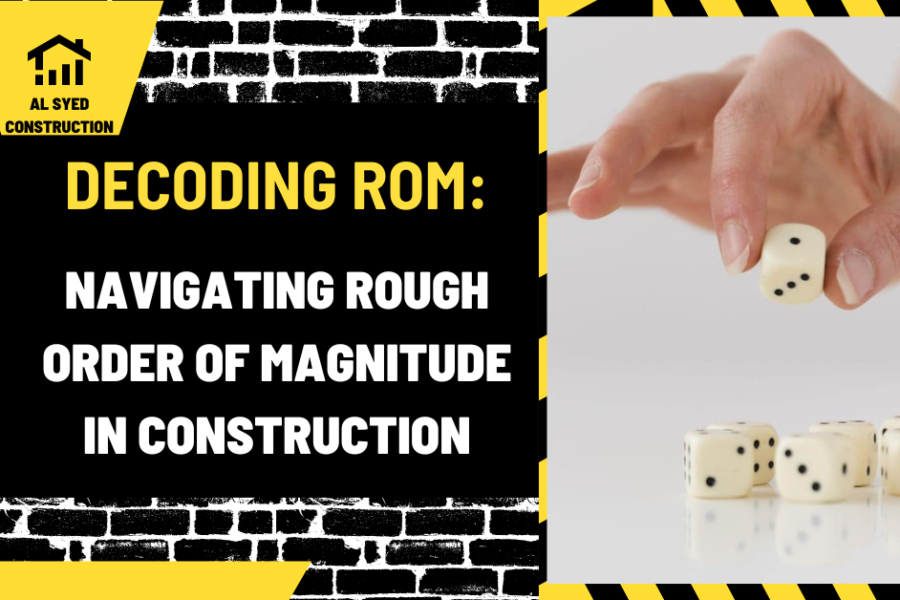Decoding ROM: Navigating Rough Order of Magnitude in Construction
In the realm of construction, the term “ROM” stands for Rough Order of Magnitude. It is a crucial concept used during the early stages of project planning and budgeting. ROM provides a preliminary estimate of the costs associated with a construction project, offering a ballpark figure that helps stakeholders make informed decisions. This article delves into the definition of ROM in construction, its importance, methodology, applications, and best practices for ensuring its accuracy and usefulness.
Table of Contents
Understanding Rough Order of Magnitude (ROM) in Construction
Rough Order of Magnitude (ROM) is an estimation technique used to provide a rough approximation of the costs involved in a construction project. It is typically expressed as a range, such as “between $X and $Y,” to account for uncertainties and variables that may impact the final cost. ROM estimates are usually based on historical data, industry standards, and preliminary project information.
The Importance of ROM in Construction Planning
ROM plays a vital role in the initial stages of construction planning by:
- Facilitating Decision-Making: Providing stakeholders with an early cost estimate to assess the feasibility of the project.
- Budgeting: Helping in setting preliminary budgets and securing funding.
- Risk Assessment: Identifying potential cost risks and uncertainties early in the planning process.
- Prioritization: Assisting in prioritizing project elements based on cost implications.
Methodology for Creating ROM Estimates
Creating a ROM estimate involves several steps:
- Gathering Information: Collecting preliminary project data, including scope, size, location, and any known constraints.
- Benchmarking: Using historical data and industry benchmarks to establish a baseline for costs.
- Adjusting for Variables: Accounting for factors such as inflation, market conditions, and project-specific risks.
- Calculating the Range: Determining a reasonable range for the estimate based on the gathered information and adjustments.
Applications of ROM in Construction Projects
ROM estimates are used in various construction project scenarios, including:
- Feasibility Studies: Assessing the financial viability of a project before detailed planning begins.
- Conceptual Design: Providing cost input during the conceptual design phase to guide design decisions.
- Funding Proposals: Supporting funding applications and investment proposals with preliminary cost estimates.
- Project Comparisons: Comparing the costs of different project options or alternatives.
Best Practices for Effective ROM Estimation
To ensure the accuracy and reliability of ROM estimates:
- Use Reliable Data: Base estimates on credible historical data and industry benchmarks.
- Involve Experts: Consult with experienced construction professionals and cost estimators.
- Continuously Update: Revise the ROM estimate as more detailed information becomes available.
- Communicate Clearly: Clearly communicate the assumptions and uncertainties involved in the estimate to stakeholders.
Conclusion
The Rough Order of Magnitude is an essential tool in the early stages of construction project planning and budgeting. By providing a preliminary cost estimate, ROM helps stakeholders make informed decisions, set budgets, and assess risks. While it is not a substitute for detailed cost estimation, ROM serves as a valuable guide for navigating the financial aspects of construction projects, ensuring that resources are allocated wisely and projects are set on a path to success.




